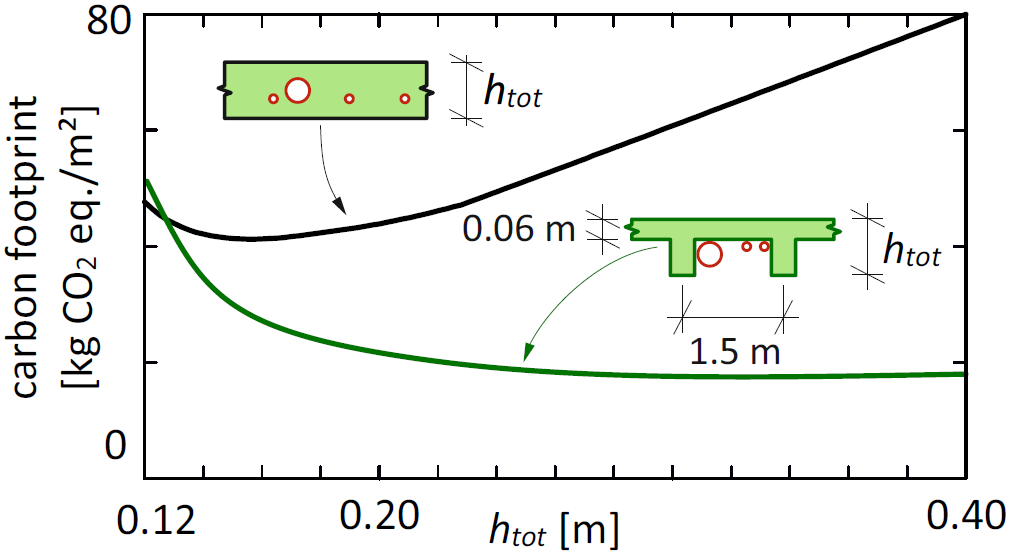Digitally fabricated ribbed concrete floor slabs: a sustainable solution for construction
DOI:
https://doi.org/10.21809/rilemtechlett.2022.161Keywords:
Digital Fabrication, Concrete Structures, Digital Concrete, Floor Slabs, Ribbed Slabs, Optimisation, SustainabilityAbstract
The concrete used in floor slabs accounts for large greenhouse gas emissions in building construction. Solid slabs, often used today, consume much more concrete than ribbed slabs built by pioneer structural engineers like Hennebique, Arcangeli and Nervi. The first part of this paper analyses the evolution of slab systems over the last century and their carbon footprint, highlighting that ribbed slabs have been abandoned mainly for the sake of construction time and cost efficiency. However, highly material-efficient two-way ribbed slabs are essential to reduce the environmental impact of construction. Hence, the second part of this paper discusses how digital fabrication can help to tackle this challenge and presents four concrete floor systems built with digitally fabricated formwork. The digital fabrication technologies employed to produce these slab systems are digital cutting, binder-jetting, polymer extrusion and 3D concrete printing. The presented applications showcase a reduction in concrete use of approximately 50% compared to solid slabs. However, the digitally fabricated complex formworks produced were wasteful and/or labour-intensive. Further developments are required to make the digital processes sustainable and competitive by streamlining the production, using low carbon concrete mixes as well as reusing and recycling the formwork or structurally activating stay-in-place formwork.

Downloads
Published
How to Cite
Issue
Section
License
Copyright (c) 2022 Jaime Mata-Falcón, Patrick Bischof, Tobias Huber, Ana Anton, Joris Burger, Francesco Ranaudo, Andrei Jipa, Lukas Gebhard, Lex Reiter, Ena Lloret-Fritschi, Tom Van Mele, Philippe Block, Fabio Gramazio, Matthias Kohler, Benjamin Dillenburger, Timothy Wangler, Walter Kaufmann

This work is licensed under a Creative Commons Attribution 4.0 International License.
Authors retain copyright of the articles published in RILEM Technical Letters and grant the journal the right of first publication with open access. The work is simultaneously licensed under Creative Commons Attribution 4.0 International License (CC BY 4.0) that allows others to share and adapt the work under the following terms: 1) a proper attribution is given in a form of a reference to the original work's authorship and initial publication in RILEM Technical Letters (bibliographic record with the DOI link); 2) a link to the license is provided; 3) the changes (if any) are indicated.









